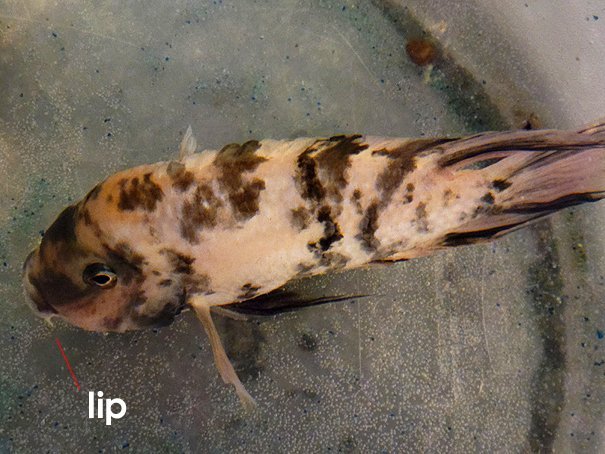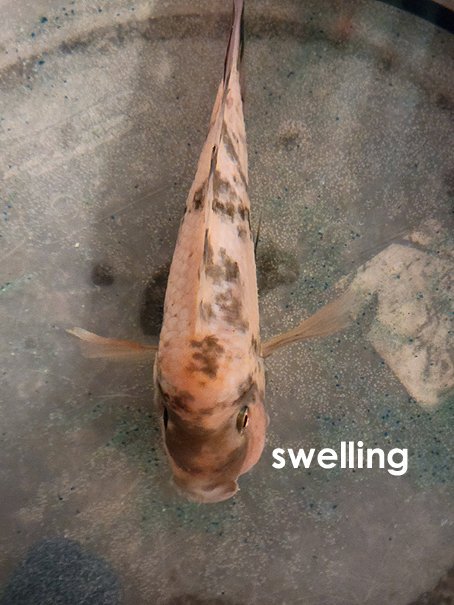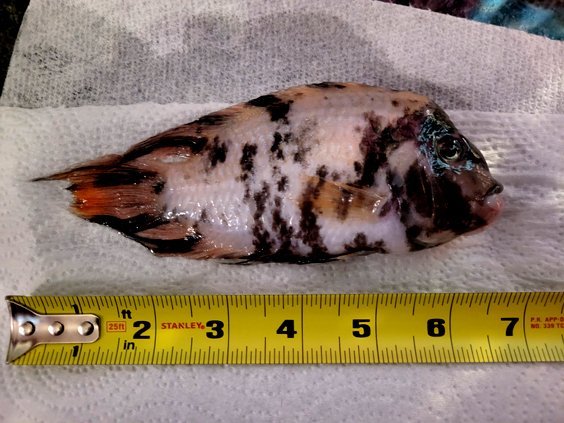FH's aren't typically produced in large production fish farms, in fact, the exact opposite. It sounds like a nice theory, but a more realistic theory is the millions upon millions of other designer fish that hit the fish scene around the same time, where antibiotics are widely used, is IMO more likely what kick started the advent of the more virulent strains of this disease. As one example, designer strains of discus have been around a LOT longer than flowerhorn.
I have owned several flowerhorn over the years, along with various other hybrid fish, and never once had a case of this disease in one of my tanks. Maybe I was just born lucky?
Regarding the use & abuse of antibiotics in aquaculture, I posted the following years ago.
There has been growing concern about the overuse of antibiotics in the ornamental fish industry and its possible effect on the increasing drug resistance in both commensal and pathogenic organisms in these fish. The aim of this study was to carry out an assessment of the diversity of bacteria...

www.ncbi.nlm.nih.gov
Imported ornamental fish are colonized with antibiotic-resistant bacteria.
Rose S, Hill R, Bermudez LE, Miller-Morgan T.
SourceDepartment of Biomedical Sciences, College of Veterinary Medicine, Oregon State University, Corvallis, OR, USA; Department of Microbiology, College of Science, Oregon State University, Corvallis, OR, USA.
Abstract
There has been growing concern about the overuse of antibiotics in the ornamental fish industry and its possible effect on the increasing drug resistance in both commensal and pathogenic organisms in these fish. The aim of this study was to carry out an assessment of the diversity of bacteria, including pathogens, in ornamental fish species imported into North America and to assess their antibiotic resistance. Kidney samples were collected from 32 freshwater ornamental fish of various species, which arrived to an importing facility in Portland, Oregon from Colombia, Singapore and Florida. Sixty-four unique bacterial colonies were isolated and identified by PCR using bacterial 16S primers and DNA sequencing. Multiple isolates were identified as bacteria with potential to cause disease in both fish and humans. The antibiotic resistance profile of each isolate was performed for nine different antibiotics. Among them, cefotaxime (16% resistance among isolates) was the antibiotic associated with more activity, while the least active was tetracycline (77% resistant). Knowing information about the diversity of bacteria in imported ornamental fish, as well as the resistance profiles for the bacteria will be useful in more effectively treating clinical infected fish, and also potential zoonoses in the future.
© 2013 Blackwell Publishing Ltd.
..................................................
Fancy fish could harbor dangerous bacteria
by Rose Eveleth February 6, 2013 03:00am PST
Around the world, private collectors and businesses maintain beautiful fish tanks stocked with colorful corals, speedy little cichlids and stately angelfish. But a hidden danger lurks: many fish that wind up in aquariums carry antibiotic-resistant bacteria that could pose a threat not just to a billion-dollar industry but to human health.
A recent study published in the Journal of Fish Diseases measured 32 different ornamental fish that entered the port in Portland, Ore., from places such as Colombia, Singapore and Florida. The specimen were found to carry 64 different bacterial colonies, and many were resistant to antibiotics to varying degrees. The bottom line: not only were the fish more susceptible to infection, but their bacteria harbored genes that could make them immune to drugs - genes they can pass along.
Resistance to antibiotics can develop in a number of ways, but the most common culprit is overtreatment, a practice commonly used when fish are transported.
The chain of events is pretty easy to follow. The majority of ornamental fish start their lives in Asia and other exotic locations and are shipped all across the globe. Those trips aren't a walk in the park for the animals, says Luiz Bermudez, a microbiologist at Oregon State University, and one of the researchers on the study.
It's stressful even if we humans get in an airplane and fly for 14 hours; he says, so when a fish gets to a destination, many times the fish presents with a kind of stress-related disease.
To prevent stocks from going belly-up before they reach their destination, many importers often proactively treat their catch with antibiotics. That, says Bermudez, is a big driver of the antibiotic resistance his team found in the study.
How antibiotic resistance spreads
It's not just fish who might be in trouble, either. That's because a resistant bacterial strain can pass its resistance to another species, Bermudez says.
So, in theory, an antibiotic-resistant fish bacteria could transfer the set of genes that confer that resistance to a bacteria that infects humans, Bermudez says. That means a human bacteria that was formerly felled by certain antibiotics would suddenly become immune to them.
Complicating matters is the fact that many antibiotics used to fight fish bacteria are the same ones widely used on humans. Among the antibiotics that the fish bacteria were best at warding off is Tetracycline, a drug used to treat everything from acne to rosacea to cholera in humans. Up to 77 percent of the studied specimens were resistant to this drug.
While it is unlikely that these bacteria will be transmitted from fish to humans, both fish owners and importers should be extra careful. If you're going to clean a fish tank, you should be aware that there is a possibility that you're going to get some infection, he says.
Aside from the health implications, antibiotic resistance could be a drain on the bottom line for aquarium suppliers. The global market for ornamental fish is worth an estimated $15 billion each year. The world spends $900 million a year alone on just the live fish - a figure that has grown an average of 14 percent each year for the past 25 years. Should certain fish become entirely resistant to the antibiotics that help them survive, the industry could suffer a huge economic blow totaling millions of dollars.
Bermudez says the ornamental fish industry isn't deaf to the dangers of antibiotic resistance. It has already made some changes based on his teams research - such as treating fish less frequently with antibiotics unless necessary and figuring out how to ship them more safely.
But the industry deals with 6,000-plus species of fish, shipping from more than 100 countries, and most countries have no specific regulations regarding antibiotic use. So while individual suppliers might do their part to cut back on antibiotics, many are likely to continue preemptively treating their stocks to avoid disease.
There are still some open questions for researchers studying this antibiotic resistance. For example, Bermudez wants to understand whether or not the bacterial community of imported fish changes after a few weeks at a facility in the United States. Perhaps, he says, importers could eliminate fish with these resistant strains before they are transported to fish tanks across the country, preventing the resistance from spreading
For fish and humans alike, the vicious cycle of antibiotic resistance should be a serious concern. That's because the fewer antibiotics that work to fight a particular disease, the more likely it is to have a negative impact on the population. The more resistant genes that exist, the more likely other bacteria are to become resistant. The longer suppliers rely on antibiotics to broadly safeguard stocks, the more likely they are to develop resistance.
So now we're facing a kind of a crisis situation in the case of humans and animals, that many times we don't have antibiotics or we only have one antibiotic that can be used to kill the microorganisms that's causing the infection, and that's a serious problem, Bermudez says.
.........................................................................
Don't blame the fish, hybrids or not - humans created the current mess that we are in.







